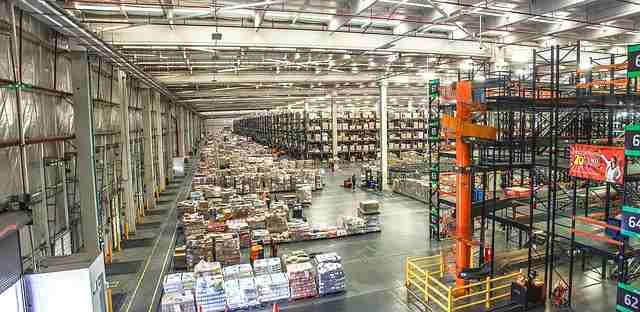The Long Tail Economy is defined by the ability of marketing to reach a small, but highly engaged and passionate target market or customer segment with a customized product or service.
The Head Economy-Old Marketplace
In the old marketplace, the only way to sell a product was either through a brick and mortar retail establishment such as a department store or via catalog sales. Bound by the physical limits of a retail store or the number of pages in a catalog, businesses were forced to focus only on the best sellers. Customer acquisition options were also limited primarily to mass media sources like TV, Radio, and newspapers.
Limits on retail shelf space and the lack of being able to target specific market segments meant that if you wanted to make money, you had no real option but to use mass media and sell mass-market products or services.
As a business owner, unless you had a product or service that you could sell to millions of people, there simply was no cost-effective way in the old economy to find and attract new customers. That meant that if you had an idea for a business to help, say single-mothers with a Down-syndrome child, while there might be more than enough potential customers to support this type of business in a specific geographic area, there was no way to effectively market to them so they would become aware of your offering.
Customer acquisition in the old marketplace meant that you had to pay for a ton of impressions in the hope that over time, a sufficient number of impressions would create enough brand awareness within your specific customer segment to get a prospect to know your business existed. This was a highly inefficient marketing process that drove up the costs of niche products.
The basic limits of retail shelf-space and marketing channels of the old marketplace restricted companies to producing only products or offering services that appealed to a large percentage of the general population and discouraged niche product or service offerings.
Long Tail Economy – New Marketplace
Today, our economy has shifted from a few mass markets to millions of small niche markets. Technology such as the internet and sophisticated search engines have made it easier for consumers to find and buy niche products. Moreover, microtargeting, which is the ability to filter prospects by demographic, psychographic, and even by their behaviors has allowed businesses to focus their marketing efforts on potential buyers that are very likely to be interested in what their company has to offer.
Those millions of niche products have created what Chris Anderson, the editor-in-chief of Wired Magazine, called the “Long Tail of Retail.” Until the advent of the internet, the sale of custom or niche products had been largely neglected.
If you are a small business selling shoes online today, you could never compete with the likes of Nike for the keyword “Shoes” given its brand awareness, Domain Authority, and monthly traffic. In the long tail economy of shoes, your business would live far down the long tail. However, by dividing the overall market into many long tails, not just one large one, we end up with many heads and many long tails. While a keyword like “Women’s Size 15 Pink Tennis Shoes” may not get many monthly search results, it is very likely that if that was a keyword that you optimized your product page for, you would likely reside at the head of that long tail keyword. While you could never survive on that one product alone, optimizing dozens of these small niche products is the essence of the new marketplace in the long tail economy.
Today, online retailers are no longer restricted to delivering only physical products. Digital downloads enable retailers like Amazon and iTunes to stock virtually everything with almost no space restrictions. Literally, millions of songs and eBooks can be stored on a single server.
With the advent of 3D printing, electronic instructions can be sent from a server to a local 3D printer to produce physical products. Moreover, distribution centers with their high ceilings and automated item-picker robots, are located in remote and low-cost areas of the country. When combined with next-day, and even same-day delivery options in some areas, this makes it possible to have inventories for all kinds of niche products.

In the past, traditional retail stores only stocked items that appealed to mass markets because shelf space was limited and retail space was expensive. In today’s Long Tail Economy, the nearly infinite shelf-space of online retailers, new distribution mechanisms (e.g., digital downloads), and peer-to-peer markets (e.g., eBay and Uber), have virtually eliminated the bottleneck of distribution.
According to Chris Anderson, the Long Tail Economy is rooted in the theory that our culture and economy is increasingly shifting away from a focus on a relatively small number of mainstream products and markets at the head of the demand curve, and toward a huge number of niche products in the tail.
As the costs of customer acquisition, production, and distribution fall- especially for online products- there is now less need to lump products and consumers into a one-size-fits-all container. In an era without the constraints of physical shelf space and bottlenecks of distribution, narrowly-targeted goods and services can be just as economically attractive as mainstream ones.
Three economic triggers have given rise to the Long Tail Economy:
- Falling technology costs give individuals access to tools that were formerly too expensive.
- The internet has created channels that lower transaction costs, opening up markets for niche products.
- Powerful search engines allow potential buyers of niche products to search, while recommendation engines and user ratings have made it easier for buyers to locate products.
How does the “Long Tail of Retail” affect your industry?












